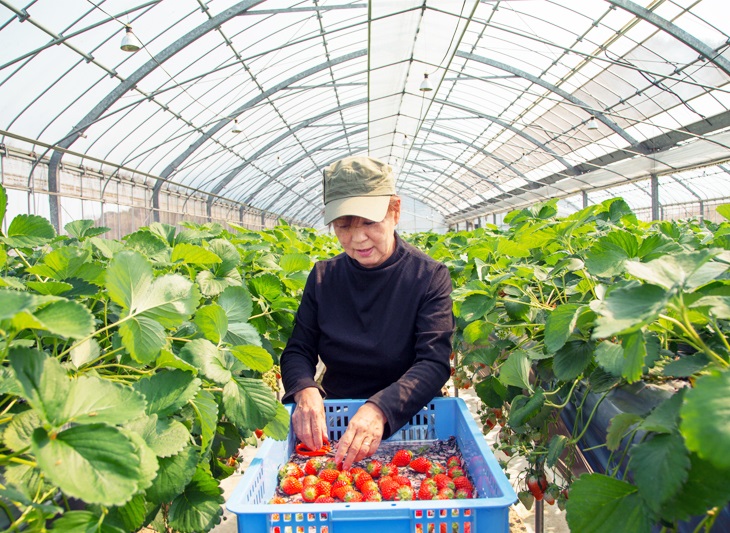APEC Paves Way for Small Businesses to Go Global

In today’s world, where marketing, billing and conferencing can all be done online, it’s never been easier for small pockets of local expertise to sell to a global audience.
The Asia-Pacific's business landscape, largely regarded as a critical pillar of the global economy, is characterized by small to medium enterprises. These enterprises have been described1 as "relatively fragile" but with significant growth potential.
Ninety-seven per cent of all business in the region is classified as “micro, small to medium” or MSMEs, with shares of GDP ranging from 20 per cent to 50 per cent in the majority of APEC economies. There is, however, a gap: less than 35 per cent of direct exports in the region is sourced from these small businesses.
“APEC has been very successful at stimulating cross-border investment by big corporations,” says the Director of APEC’s Policy Support Unit, Denis Hew. “However, there isn’t enough sourcing of services or materials from local companies and this is partly because these small businesses do not possess the relevant expertise. The inability of small enterprises to tap easily into global value chains is a constraint on intra-APEC trade.”
APEC's policy agenda in the past couple of years is to support SMEs' engagement with international trade.
“APEC’s objective is inclusive growth,” says Dr. Hew. “At the global trade level, MSMEs don’t have much of a voice so APEC is committed to examining what keeps them out of global supply chains.”
“Last year, the Philippines highlighted the needs of MSMEs and included them in the APEC agenda. Now, APEC leaders have signaled their desire to enhance global companies’ ability to source goods, services, and expertise from local enterprises.”
The challenge: increased caution among big corporations
“Many factors contribute to the long-term success of large-small enterprises relationships,” says Bernadine Zhang, co-author of an APEC study on integrating MSMEs into global value chains. “There are internal factors such as performance measurement and supplier development; and external factors, such as the business environment and physical informational structures.”
The research showed that following the global financial crisis, big corporations consolidated their supply chains and secured components from fewer suppliers. The authors also observed a trend of re-locating businesses, especially in component manufacturing. This is due to increasing costs of business in developing Asian economies, which alters commercial advantage.
Aside from challenges, the research also identified the broader opportunities for MSMEs. According to Zhang, these include the rise of consumer markets in developing economies, growth in cross-border e-commerce trade, and a rise in trade of services.
“Some economies have an intrinsically strong small businesses sector. For example, this sector provides over 80 per cent of employment in Canada, Chile, Indonesia, Republic of Korea and Thailand,” says Zhang. “The question really is: what can be done on an APEC-wide basis? The areas we are focusing on are customers and trade.”
The Boracay Agenda: practical measures for policy change
Efforts to help small enterprises engage in intra-APEC trade received a boost in 2015 as APEC Leaders formerly adopted a reform program aimed at streamlining customs procedures, improving finance access and enhancing e-commerce opportunities.
The Boracay Action Agenda is an eight-point plan that identifies areas for government action on trade policy, finance, and market regulation. The agenda is expected to be implemented in six years.
According to Hew, the MSME integration initiative has the potential to transform wealth creation in communities across APEC. Since 80 per cent of global trade is conducted by international companies, enhancing MSME’s ability to tap into global value chains offers huge commercial and developmental prospects.
The agenda highlights the need to streamline customs procedures and put the focus on the critical importance of access to finance. It encourages member economies to support measures like equity financing, venture capital and trade and supply chain finance being made accessible to small companies.
The leaders also committed to changes in market regulation. The framework seeks to facilitate the access of MSMEs to free and regional trade agreements by simplifying and streamlining rules of origin requirements. It also seeks to foster clustering and enhance opportunities for e-commerce, including identifying regulations that unnecessarily constrains MSMEs ability to trade.
Recognizing the important role of small businesses
“We’re seeing an increased trend in political awareness of the needs of smaller companies and a desire to help start-ups,” says Dr. Hew. “Singapore has done a great job in encouraging small-scale entrepreneurship and Australia has demonstrated an economic vision that is ‘creative, agile and innovative.’
“In today’s world, where marketing, billing and conferencing can all be done online, it’s never been easier for small pockets of local expertise to sell to a global audience,” says Dr. Hew. “If we can reduce the barriers that small businesses face within APEC, the potential impact on global trade could be immense.”
The APEC Secretariat, with support from Google, is hosting a video competition designed to show how small businesses across Asia Pacific are embracing mobile technology to grow, trade and integrate into global value chains. So get your mobile gadgets out, film your 60-second story, and head on to the APEC website to submit your videos! A sponsored trip to the APEC CEO Summit in November in Lima, Peru awaits the winners.
1. Policy Guidebook for SME Development in Asia and the Pacific
For more information:
Ma. Lizbeth Barona-Edra | [email protected]

